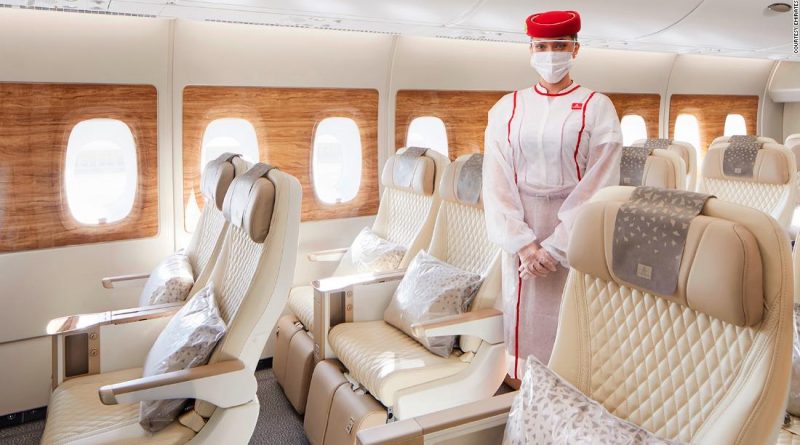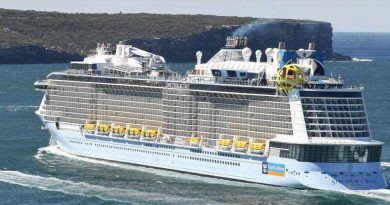Premium economy: Why this will be the hottest airplane seat in 2021
Premium economy. The two words might seem a weird combination in airline terms, since it’s a rare airline where economy seats feel premium these days. But these seats between coach and business class on international flights were heating up even before Covid-19, and as we all start to travel again in 2021, they’re set to be a must-fly for many passengers.
Why? It’s a combination of factors.
First, the economic crisis means that business class travelers will be “trading down” to premium economy — whether that’s people flying for work whose travel policies are being tightened or upmarket leisure travelers who are feeling the pinch on their wallets but don’t fancy feeling it at their knees or elbows.
Second, frequent fliers will have miles to burn after a year of reduced traveling, and with those straitened travel policies that land business travelers in economy, we’ll likely see some of them upgrading themselves to the slightly better seats with their points. That’s alongside pent-up leisure travelers looking for a bit of a splurge, even in hard times.
Third comes the fact that, after more than a year of Covid-19, we’re just not psychologically used to being cheek-by-jowl with other people anymore. It’s going to feel very strange to think about doing that on a plane, so the extra space in premium economy will be welcome.
Load Error
What is it?
But what is premium economy? Fundamentally, it’s a bigger seat, says Ben Orson, a designer responsible for many of the most successful seats of the past decade, and now managing director of Orson Associates.
“The most important part of what a premium economy seat offers the passenger is a significant upgrade in terms of comfort when compared to economy. Premium economy seating typically provides around 5 to 10 inches of additional leg room, a more generous recline with a leg rest and an enhanced entertainment experience with a much larger screen.”
Seats are also around two to three inches wider, and there are usually one to two seats fewer in each row: eight in a Boeing 777 or Airbus A380, for example, compared with 10 seats in most economy classes.
“This approach has paid off for airlines,” Orson says, “with both British Airways and Virgin Atlantic saying that, per square foot, premium economy is the most profitable part of the plane.”
Premium economy is found, metaphorically and on the actual aircraft, between the increasingly spacious and luxurious business classes and the increasingly less spacious and less luxurious economy classes.
Airbus calls this widening gap the “comfort canyon.”
Matt Round, chief creative officer at design studio Tangerine, explains that for airlines, it helps to fill this gap and that along with that larger seat comes some additional perks.
“Airlines tend to offer premium economy passengers access to more priority services such as free seat reservations, priority boarding and increased luggage allowance. The services that are offered vary according to the airline.”
Who flies it?
Passengers usually first approach premium economy from one of two directions: either upgrading from economy or downgrading from business.
“Pre-Covid-19, premium economy performed well for leisure passengers who wanted a slight treat or for cost-conscious large and small businesses,” Round explains. “On some routes, there was a tendency for passengers traveling on business to fly premium economy during the day and return on a fully flat bed in business class on the night flights.”
But, where business class seats have become more spacious and economy class seats have shrunk both in legroom and elbow room, how have premium economy seats changed since their introduction nearly 30 years ago aboard Virgin Atlantic and EVA Air?
“They haven’t, not really,” says Peter Tennent, director of design house Factorydesign.
“When we designed the first British Airways’ World Traveller Plus seat in 2000, the basis for the seat customization was an aging business class platform. These conventional, yet larger recliner seats were beginning to be superseded by enhanced business class offers, so there was a fairly obvious option to downgrade them from business to a reduced offer to sit between business and economy.”
Despite many advances in inflight entertainment and connectivity features such as on-demand inflight touchscreen entertainment, power sockets, WiFi internet and more, the basic seat hasn’t changed much, Tennent says.
“There have been many new premium economy seats, some bespoke, others derivatives of existing platforms, but all still following the same principle.”
What about the future?
Premium economy, says Martin Darbyshire, chief executive officer of Tangerine, is “a life saver for me as a business traveler who runs a privately owned company, and therefore cannot justify flying business class whenever I want.
“For a day flight, especially, premium economy is a comfortable way of flying with a reasonable quality of service. The smaller cabin is also a benefit, as it creates a more private space.”
Premium economy is also very popular with senior citizens on vacation, particularly because they can usually book early for lower fares.
Business travelers, on the other hand, can find it expensive at the last minute, Darbyshire notes. That said, these passengers — especially if they’re also frequent fliers — are among the first to be upgraded into business class if the premium economy cabin is getting full.
Overall, says Orson, “premium economy will continue to be attractive to the very tall, the elderly, and anybody else for whom economy class presents too much of a physical challenge.”
But, looking forward, he muses, “could it be that the approach which launched premium economy in the first instance — a considered selection of those aspects of business class that really matter to passengers today, such as a more technologically informed approach to comfort, greater privacy, enhanced connectivity or a more distanced boarding experience — might be applied again to create a new way of traveling, perfectly tailored to the ever-evolving needs of our passengers of the future?”
Whatever the future looks like, Tennent from Factorydesign notes, “Aviation is a battleground for differentiation. If one airline can offer — or claim to — something better, different or novel compared to their competitors, it provides a commercial advantage.”
Source: Read Full Article





